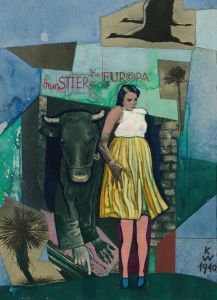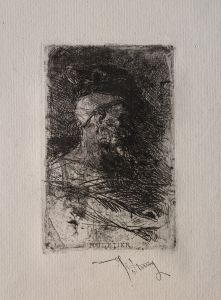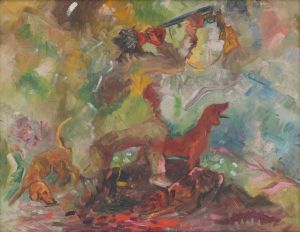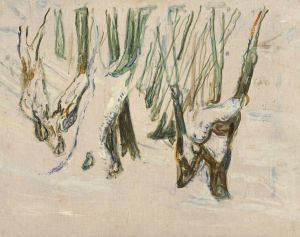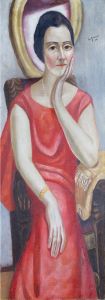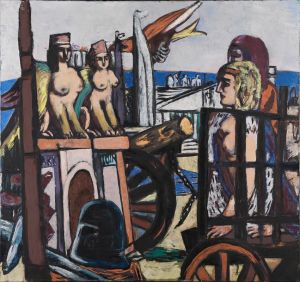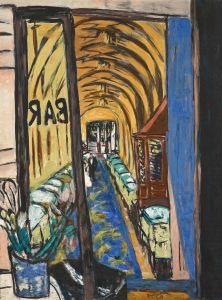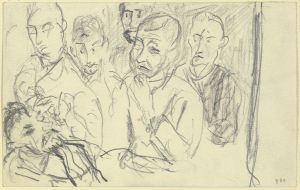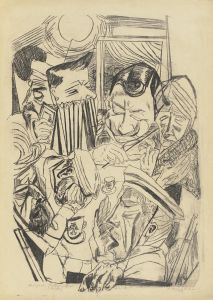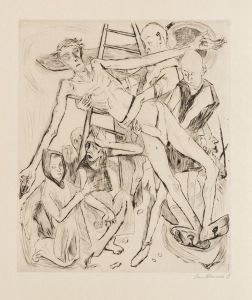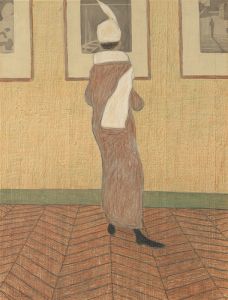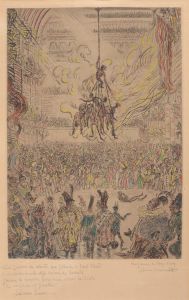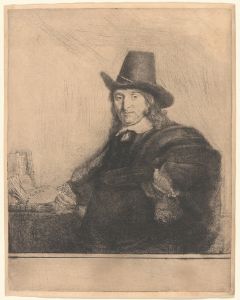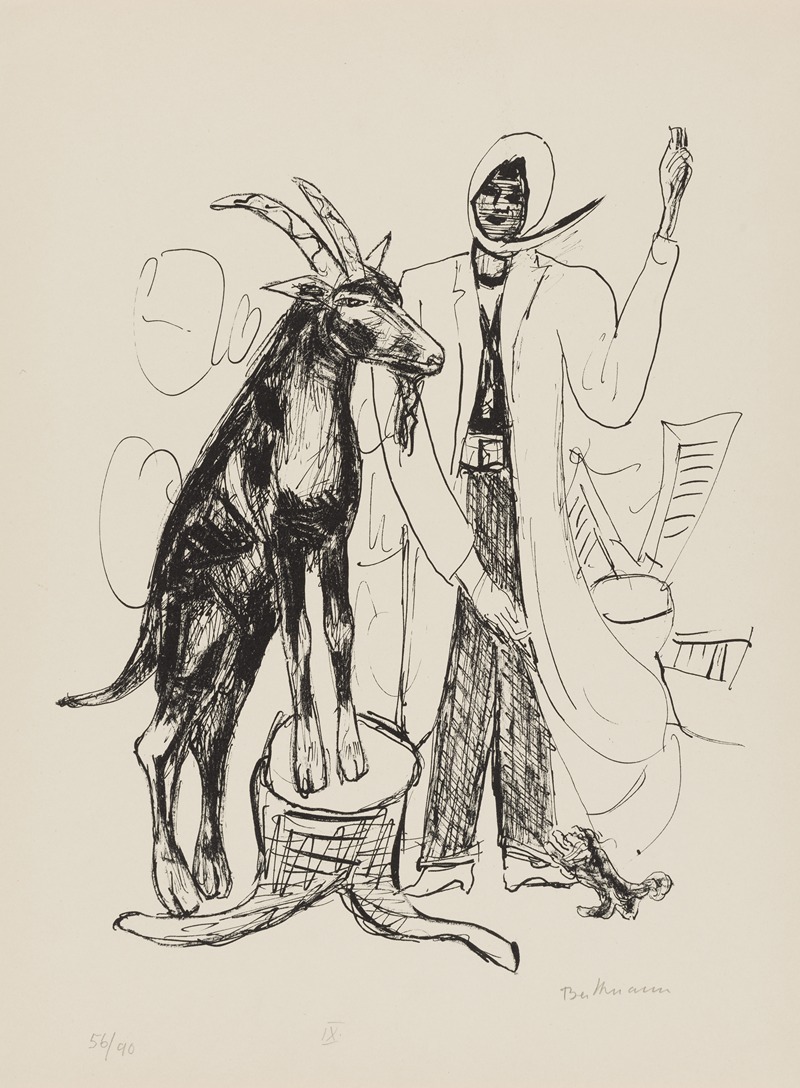
The Buck
A hand-painted replica of Max Beckmann’s masterpiece The Buck, meticulously crafted by professional artists to capture the true essence of the original. Each piece is created with museum-quality canvas and rare mineral pigments, carefully painted by experienced artists with delicate brushstrokes and rich, layered colors to perfectly recreate the texture of the original artwork. Unlike machine-printed reproductions, this hand-painted version brings the painting to life, infused with the artist’s emotions and skill in every stroke. Whether for personal collection or home decoration, it instantly elevates the artistic atmosphere of any space.
Max Beckmann, a prominent German painter and printmaker, created "The Buck" in 1937. Beckmann is often associated with the New Objectivity movement, which emerged in Germany in the aftermath of World War I as a reaction against the emotional intensity of Expressionism. His works are known for their bold forms, complex compositions, and often, a sense of psychological tension.
"The Buck" is a significant work within Beckmann's oeuvre, reflecting his mature style characterized by a robust use of color, strong outlines, and a sense of narrative complexity. The painting depicts a buck, or male deer, which is a subject that Beckmann returned to in various forms throughout his career. The image of the buck in Beckmann's work can be interpreted as a symbol of nature, vitality, and perhaps a reflection on the human condition, though Beckmann himself was often reticent to ascribe specific meanings to his symbols, preferring viewers to draw their own interpretations.
This painting was created during a tumultuous period in Beckmann's life. In 1933, the Nazi regime came to power in Germany, and Beckmann, like many artists of his time, faced increasing pressure and censorship. His work was labeled as "degenerate art" by the Nazis, and he was dismissed from his teaching position at the Städelschule in Frankfurt. In 1937, the same year "The Buck" was painted, the infamous Degenerate Art Exhibition was held in Munich, showcasing works that the Nazi regime deemed to be corrupting influences on German culture. Beckmann's art was included in this exhibition, leading him to leave Germany for Amsterdam, where he lived in exile until the end of World War II.
"The Buck" reflects Beckmann's resilience and determination to continue his artistic practice despite the oppressive political climate. The painting's composition is dynamic, with the buck positioned in a way that suggests movement and vitality. Beckmann's use of color is striking, employing a palette that enhances the dramatic tension of the scene. The painting's style is consistent with Beckmann's broader body of work, which often features a blend of realism and abstraction, with figures and objects rendered in a way that emphasizes their emotional and symbolic significance.
Today, "The Buck" is recognized as an important example of Beckmann's work during this challenging period. It exemplifies his ability to convey complex themes through a distinctive visual language, and it continues to be studied and appreciated for its artistic and historical significance. Beckmann's legacy as a major figure in 20th-century art is firmly established, and his works, including "The Buck," are held in high esteem by art historians and collectors alike.





